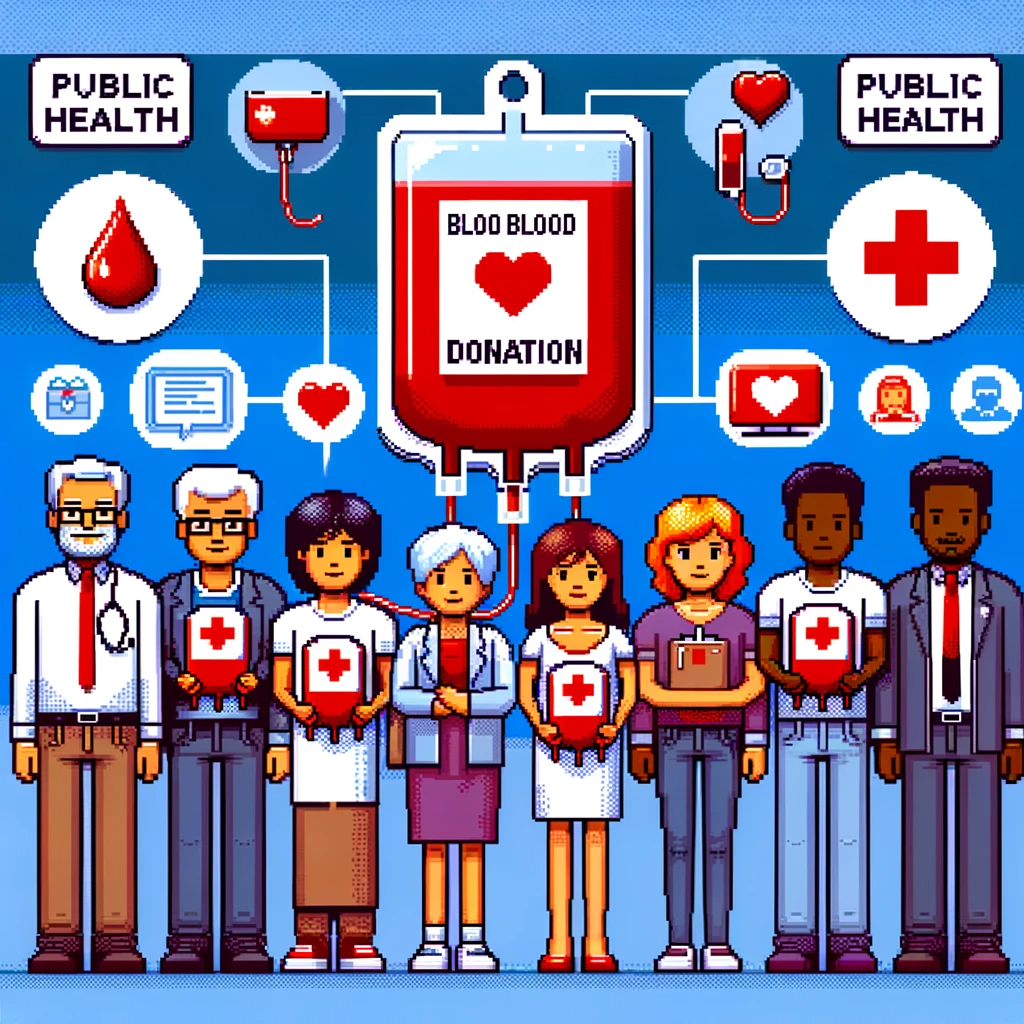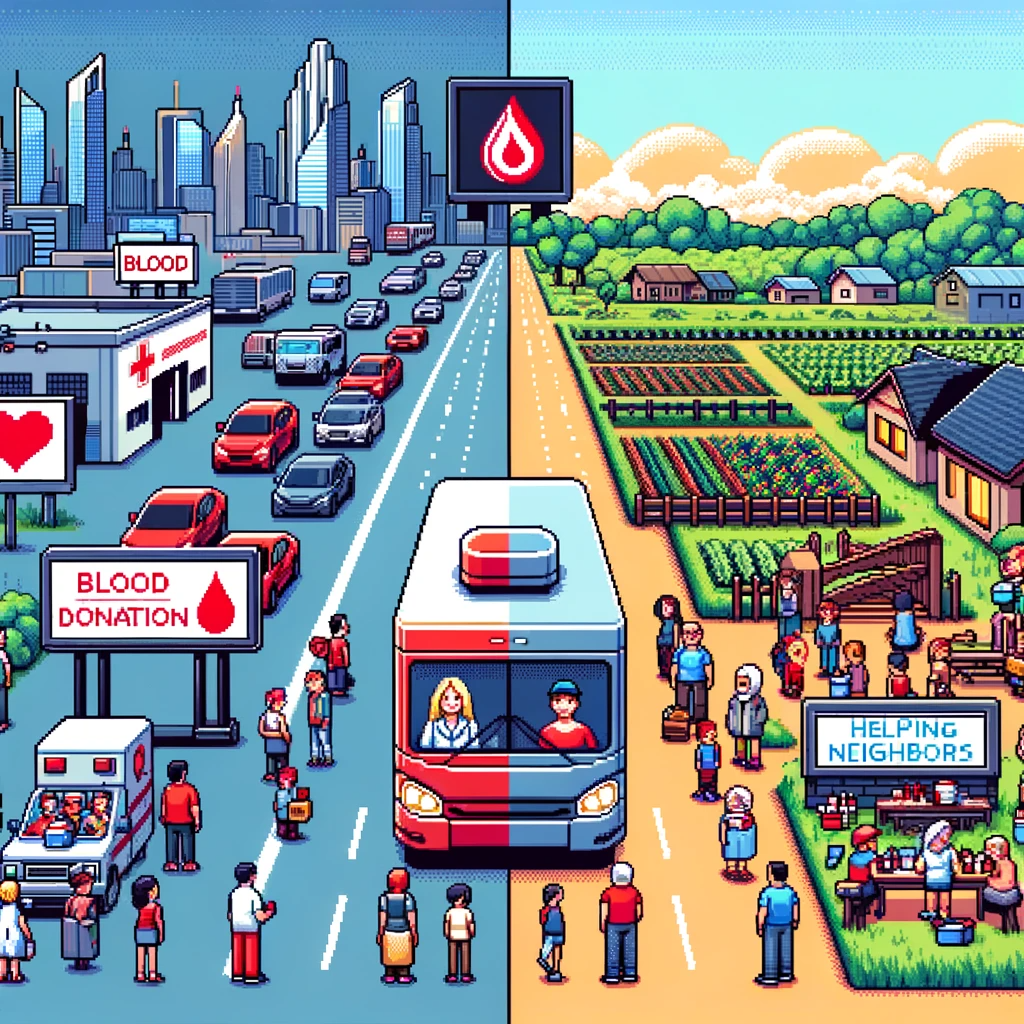
Understanding Blood Donor Behavior: Insights from Recent Research
It’s National Blood Donor Month!
Blood donation is a critical aspect of healthcare systems worldwide, ensuring that life-saving blood is available for patients in need. However, understanding the factors that influence blood donor behavior is complex and requires continuous research.
The recent systematic review, “Individual, contextual and network characteristics of blood donors and non-donors: a systematic review of recent literature,” provides valuable insights into this area. This blog aims to distill the key findings of this comprehensive review for public health practitioners, emphasizing its implications for donor recruitment and retention strategies.
The Study at a Glance
The review analyzed 66 peer-reviewed papers published between October 2009 and January 2017. The goal was to understand the individual, contextual, and network characteristics influencing blood donation. The findings were categorized into donor demographics, motivations and barriers, adverse reactions and deferral, contextual factors, and blood center factors.
Key Findings and Implications
1. Diverse Donor Demographics
The review highlights that donor demographics are not consistent across studies, indicating no single “typical” donor profile. This variability suggests that public health campaigns should be tailored to specific populations, considering local cultural and demographic nuances.
2. Motivations and Barriers
Altruism, the selfless concern for the well-being of others, is often cited as a primary motivator for blood donation. Many donors are driven by the desire to help others, particularly in emergencies or when aware of the shortages in blood supply. This sense of social responsibility and willingness to contribute to the community’s health can be powerful motivators.
However, alongside altruistic motives, self-serving reasons also play a significant role. These can include personal benefits such as feeling good about oneself, receiving social recognition, or even responding to incentives offered by blood donation campaigns. Understanding that these motivations can coexist is essential for public health strategies aimed at encouraging blood donation.
Addressing Barriers
Equally important to understanding why people donate is recognizing why they might refrain from doing so. Common barriers include fear of needles, misconceptions about health risks or eligibility, lack of awareness, and inconvenience in terms of location and time.
3. Adverse Reactions and Deferral
Negative experiences with blood donation, such as adverse reactions or deferral, can significantly impact donor retention. This finding underscores the importance of ensuring positive donor experiences and providing clear communication about deferral reasons to maintain donor trust and willingness to return.
4. Contextual Factors
The impact of urbanization and community characteristics on blood donation behavior is a topic of particular interest in the field of public health. The review reveals mixed and varied results across different geographical areas and communities. This variation has significant implications for designing donor recruitment and retention strategies.
Urban vs. Rural Dynamics

One of the critical findings is the inconsistency in donation patterns between urban and rural areas. In some studies, urban residents were found to be more likely to donate, possibly due to better access to donation centers and greater exposure to donation campaigns. Conversely, other studies indicated higher donation rates in rural areas, which could be attributed to stronger community ties and a heightened sense of collective responsibility.
This discrepancy suggests that urban and rural communities may require different approaches when it comes to encouraging blood donation. In urban areas, strategies might focus on overcoming the challenges of a fast-paced lifestyle and making donation opportunities more visible and accessible. In contrast, in rural areas, tapping into community networks and emphasizing the communal benefits of donation might be more effective.
Community Characteristics
The review also points to the influence of community characteristics on donation behavior. Factors such as population demographics, socioeconomic status, cultural norms, and even the local prevalence of certain medical conditions can impact people’s willingness to donate blood.
For instance, communities with a higher educational level or income might respond better to campaigns that emphasize the scientific and health-related aspects of blood donation. Conversely, in communities with diverse cultural backgrounds, it may be crucial to address specific cultural beliefs and language barriers to make blood donation more approachable.
5. Blood Center Factors
Blood centers play a crucial role in managing donor relationships. The effectiveness of information, reminders, and rewards in encouraging donations was evident. Tailored communication and follow-up strategies are thus key components for maintaining a stable donor base.
Challenges and Future Directions
While the review provides valuable insights, it also highlights the need for more longitudinal and culturally diverse studies. Understanding the dynamic nature of donor behavior over time and across different cultural contexts remains a critical area for future research. Additionally, exploring network characteristics and their influence on donor behavior is an uncharted but potentially fruitful area of study.
Conclusion
The review sheds light on the complex interplay of factors influencing blood donor behavior. For public health practitioners, the key takeaway is the need for tailored, context-sensitive approaches in donor recruitment and retention strategies. By understanding and addressing the diverse motivations and barriers faced by potential donors, we can work towards ensuring a stable and sufficient blood supply for those in need.
Elevate Your Insight with Every Issue!
Ignite your journey as a public health change-maker through ‘This Week in Public Health.’ Each edition draws you nearer to the pulse of community health, pioneering research, and advocacy. Beyond mere news, it’s your catalyst for transformation. Become a part of our community of enlightened individuals dedicated to driving positive change in public health every week – subscribe for free now!



